| The Outer Harbour Pier | The Harbour | The Harbour | The Step Short Arch |
|---|---|---|---|
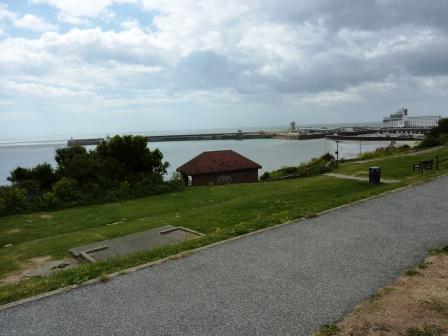 |
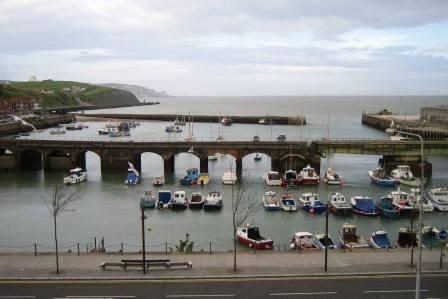 |
 |
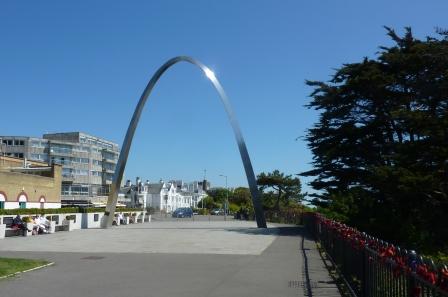 |
| Folkestone May 2011 | Folkestone Summer 2006 | Inner Harbour and Town 2017 | Step Short Memorial Arch See more HERE |
|
WHAT′S NEW FULL INDEX |
THE FOLKESTONE FAMILIES PAGE |
Powered By SimpleReg UK Web Hosting |
| Folkestone Lifeboat |
Tontine St. Air Raid WW1 100yr Memorial Service 2017 |
The Step Short Arch Memories Between the Wars |
Memories of WW2 | Benvenue Rescue | Fishing and Maritime Museum |
| The Outer Harbour Pier | The Harbour | The Harbour | The Step Short Arch |
|---|---|---|---|
 |
 |
 |
 |
| Folkestone May 2011 | Folkestone Summer 2006 | Inner Harbour and Town 2017 | Step Short Memorial Arch See more HERE |
FOLKESTONE TODAYToday Folkestone is known for its proximity to the Channel Tunnel Terminal, as a coastal town and small holiday resort, however the town has been through many changes and has enjoyed different periods of prosperity and fame or notoriety.Folkestone, with a population of about 50,000, lies on the south coast of Kent about 10 miles SW of Dover. It is easily accsessible, surrounded by some beautiful countryside and is at the foot of the North Downs. There are wonderful views from the Downs and the clifftops of the surrounding countryside, the town and across to France. The cliffs have gradually been eroded and many parts of ancient Folkestone have long disappeared. There were much wider grassy areas on the East Cliff before WW2. The Warren was a favourite play area and camping ground for local children then, and it is still a camping and caravan park and a lovely part of the area. The fishing boats and bustling fishmarket I remember along the Stade as a child on holiday have all but disappeared. There was the sandy beach with the arches to shelter under and a boatman rowing up and down keeping an eye on the bathers. The sands are just as good now although the boatman has long gone. A Mermaid Statue now presides over the bathers. |
| Fishing Boats | The Stade | The Sands | The Mermaid |
|---|---|---|---|
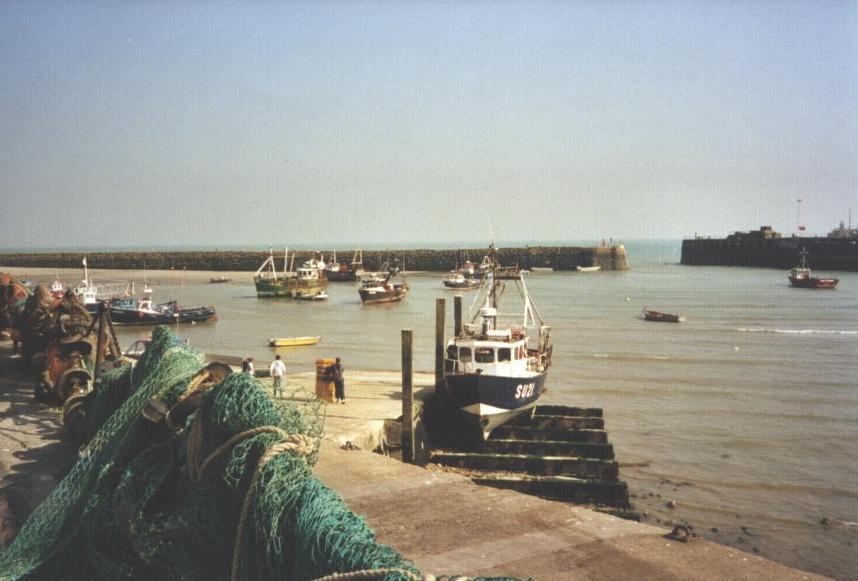 |
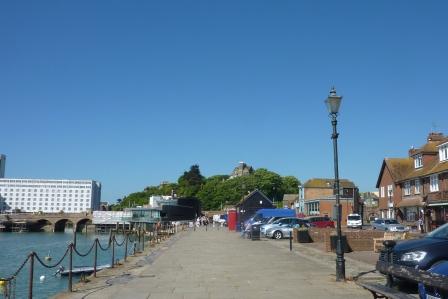 |
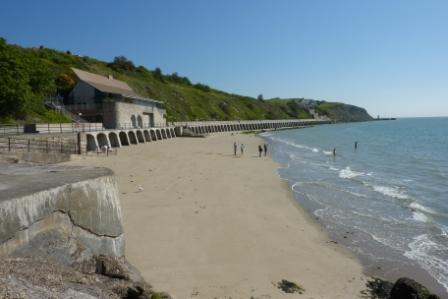 |
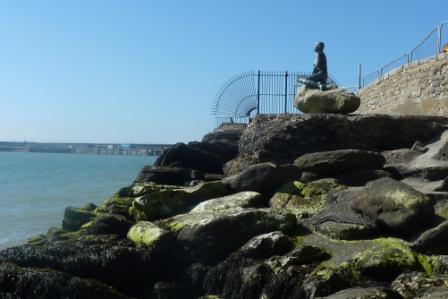 |
| Folkestone Spring 2002 | Folkestone Summer 2017 | ||
|
The cobbled High Street which always seemed full of people and busy shops is a rather seedy route up from the harbour towards the new main shopping areas. Tontine Street appears to have suffered a similar decline. Now, work has begun to turn this area into the “Creative Quarter”. A new restaurant stands overlooking the harbour close to the old railway arches and Fisherman′s Bethal.
I always wanted to walk down the Zig–Zag path and go up the lift which is now closed. It is hoped that this closure is temporary but £80,000 is needed to install a new breaking system. It is good to see the new gardens below providing a very pleasant waterfront area. The Leas is still popular and pleasant to walk along, but many old buildings in the town were damaged or destroyed during WW2 and their replacements do not all have the same appeal. |
| The Coastal Park | The Leas | The Top of the Zig Zag Path |
|---|---|---|
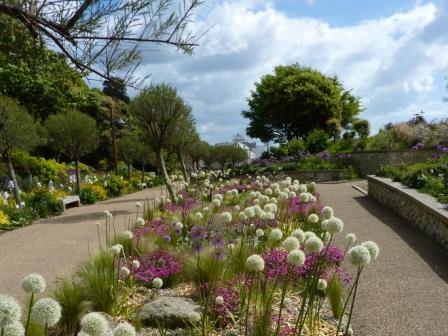 |
 |
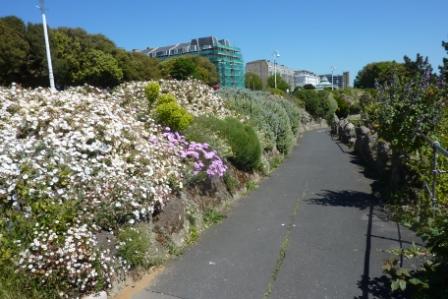 |
| Folkestone May 2017 | ||
|
The Outer Harbour was once served by the South Eastern Railway Company taking pasengers to the Cross Channel Ferries whose boats would line the Outer Harbour Pier. There are no large boats now, the main port moved, of course, to Dover but there are bold plans to re-develope the Harbour Area in the near future.
At present the old railway line across the arches which took so many soldiers to the boats headed for the Western Front and brought men back from Dunkirk is being converted into a cycle and walkway which extends past the harbour railway station and out along the outer harbour wall. The Station is being refurbished and amidst all the building work and chaos there is a very interesting new Museaum, The Fishing and Maritime Museum. The seafront also seems to be being remodelled with tons of sand brought into the area on the far side of the harbour (once shingle). |
| Work Across the Railway Arches | The Station Refurbishment | The Work on the Seafront |
|---|---|---|
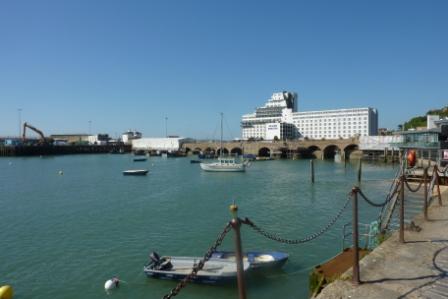 |
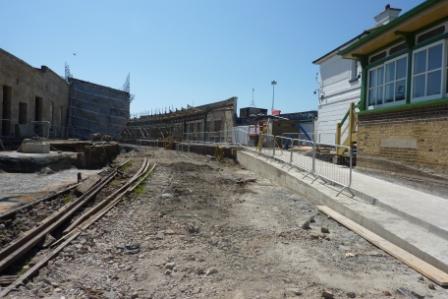 |
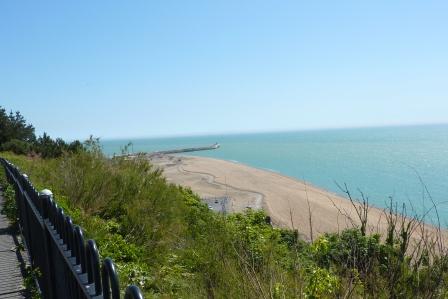 |
| Folkestone May 2017 | ||
For The GenealogistThe Parish registers of St Marys and St Eanswythe begin in 1635 and are entered into IGI.There are BT′s in Transcript and Fiche form commencing 1563 kept in the excellent Heritage Room of Folkestone Library situated on Grace Hill. There were a number of new churches built later (Baptist Meeting House 1729, Zion Chapel 1779, Society of Friends Meeting House 1790, Christ Church 1850, Weslyan Chapel 1852, Congregational Church 1856, St Peter′s Church 1862, St Michael′s Church 1865, Holy Trinity Church 1868, St John the Baptist Church 1889) and some of these records also are in the Heritage Room and on IGI. There are also newspaper collections and cuttings and many books on local history to be found amongst the wealth of information held in the Heritage Room. The Folkestone and District Family History Society hold monthly meetings, publish a quarterly journal and much more. The website and further information can be found at Folkestone and District FHS A LITTLE HISTORYThe exact origin of the town is unknown but it is likely to have begun in Celtic times. The foundations of a Celtic Villa were found beneath those of a Roman Villa on the East Cliff. Celtic coins and swords have also been found in the area and the name Folkestone may well be Celtic. The oldest spelling, Folcanstan (696) and Folcanstanae (824) could be Saxon and Roman words derived from an ealier Folgensdon indicating the British prince Folgens′ don (hill fort) where there was a ceremonial “stone”. In Saxon times King Eadbald founded a Nunnery for his daughter Eanswythe in 630 A.D. It was built in a remote spot close to the edge of the West Cliff. She died 640 and was later canonized. The work of the nunnery continued until the sea undermined the cliffs and the nunnery transferred to St Peter′s Church nearby. In 927 King Athelston restored the church and nunnery and the religeous relics were transferred to the new church where work continued until 1052 when it was attacked and ruined by Earl Godwin. In 1095 a new church and Benedictine Priory were founded and this continued until it was considered unsafe in 1138 when the new Priory and Church of St Mary and St Eanswythe was built. This was destroyed 1216 and rebuilt about 1220. This is the origin of the present Parish Church which was extended in 1236. The priory surrendered to Henry VIII in 1535 and it was pulled down and the stone used to build Sandgate Castle. The Parish Church building was restored in the second half of the 19th century by which time several other Churches and Chapels had been built in the Town: Baptist Meeting House 1729, Society of Friends Meeting House 1790, Christ Church 1850, Weslyan Chapel 1852, Congregational Church 1856, St Peter′s Church 1862, St Michael′s Church 1865, Holy Trinity Church 1868, St John the Baptist Church 1889. The settlement of Folkestone probably began about 630 under the protection of the Nunnery and Castle. It would have been a small gathering of fishermen and farmers along the shore and Pent Stream. The Manors of Folkestone and Walton, given first to the Nunnery passed to Christ Church Canterbury, Earl Godwin and after the Conquest to Bishop Odo. In The Domesday Book Fulchestan belonged to William D′Arcy, held by knight′s service. The Manor and the Town grew and prospered. It became a Market Town by charter in 1215 and was given its Charter of Incorporation 1313. By this time Folkestone was a farming, fishing and quarrying centre. The local fishermen were prone to attack foreign merchant ships and take their cargo. For this piracy the French raided and burnt the town in 1378. During 1400′s Folkestone sailors became known for their skill, courage and ruthlessness and the fortunes and wealth of the town and its inhabitants grew. By 1500 the population had risen to about 700 and by 1565 there were 120 inhabited houses and 25 fishing boats. It is about this time that the Parish Records begin and I can start to trace my Folkestone Families. There were many fishermen amoung these. They had to be prepared to resist attacks from pirates, the French, Dutch, Spanish and Scots throughout the 15–1600′s. They were heavily taxed and a scarcity of fish caused restrictions to be placed on the use of boats for trawling. Perhaps as a result smuggling increased and was a well organised business. SmugglingThe fishermen of Folkestone turned to smuggling to augment their income. By the 1700′s it was a well organised and profitable business organised by men used to the sea and to defending themselves at sea. Tobacco, spirits, tea, luxury goods and golden guineas were smuggled and hidden in secret passages and rooms, or under matresses. There was a heavy prescence of Preventative Officers in the town and a coastal blockade began in 1819. The town was notorious for its smugglers and there are some exciting stories to be found like that of the “Four Brothers” and also the “Jane” which I am sure involves my great great great grandfather. The Smuggler. The practice gradually declined during the 1800′s but a lot of money had already been made by many people of the town. A son of The Smuggler became a famous Preacher in Folkestone helping fishermen and particularly poor children of the town. The Preacher. It was common for smugglers to marry or have children baptised in Holland. That way they could claim to be Dutch if caught smuggling and escape the British courts as happened with the trial for the Four Bothers case. I was never sure how true this information was until I was given a Dutch website where I found several English names and some Folkestone people′s records. Try looking at www.zeeuwsarchief.nl you might find someone.The Fashionable Holiday DestinationAt the beginning of the 1800s Folkestone did not have a good reputation. It had areas of very poor housing, was dirty and a nest of notorious smugglers. However, it had well attended bathing machines and clean sands. Lord Radnor began a slow program of rebuilding and improving the town. In 1843 the railway arrived from London, the harbour was cleared of shingle and mud and the first cross-channel Packet began operations. An extensive program of building continued providing schools, more Churches, Public Buildings, gardens, a theatre, hotels and the pleasure pier. A piped clean water supply was provided from 1850, a gas supply from 1842 and electricity was provided from 1898. The Lifeboat Station opened in 1893 and it operated until 1930. The Folkestone Lifeboat. The Leas was laid out in 1890s and Lifts carried visitors up and down the West Cliff.Folkestone became a fashionable holiday resort as these old postcards show clearly. |
| The West Leas | The Leas | Marine Walk |
|---|---|---|
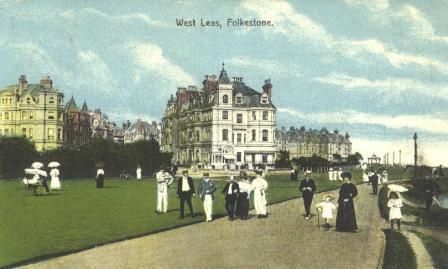 |
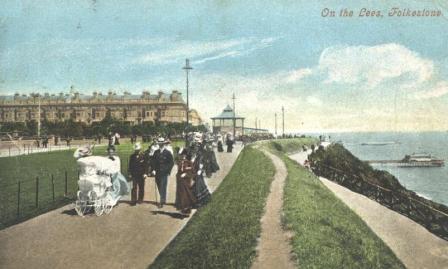 |
 |
| The Leas posted 1913 | The Leas posted 1906 | Marine Walk posted 1918 |
| WW1 brought Belgian refugees and the port was important for the despatch of troops to France. Tragedy struck on 25th May 1917 when an air raid on Tontine Street caused many deaths and heavy casualties. The Raid on Tontine Street.
After the war came the Zigzag path, the Marine Gardens Pavillion, The Leas Cliff Hall, Kingsnorth Gardens a cinema and a swimming pool. Memories from between the Wars. Then came WW2. Residents left the town if possible and they were not needed. The population fell to just 12,000 and businesses closed. The town suffered heavy bombing and shelling. Many people never returned and Folkestone was changed forever. Wartime Memories. |
| The Battle of Britain Memorial, Capel–le–Ferne | ||
|---|---|---|
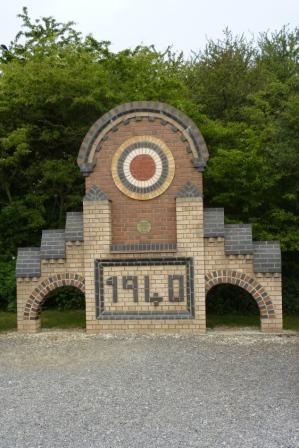 |
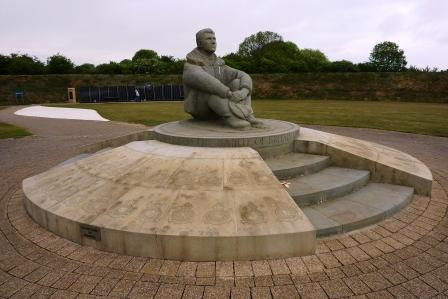 |
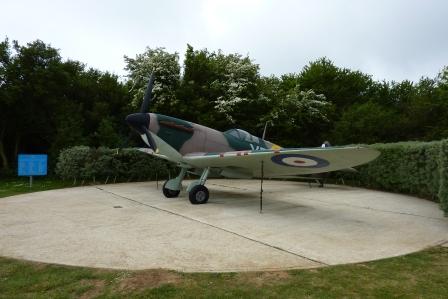 |
| Capel–le–Ferne, near Folkestone May 2011 | ||
| FOLKESTONE AREA FAMILIES | ASHFORD AREA FAMILIES Ashford Area Page |
|||
| NAME | PLACES | NAME | PLACES | |
| BAKER Families | Folkestone | WILSON Information WILSON Families | Westwell, Ashford and Folkestone |
|
| COOK Information
COOK Families | Folkestone | LANE families | Sellinge | |
| HUGHES Information HUGHES Families | Folkestone and Preston next Wingham | TICKNER Families | Mersham and Smeeth | |
| JOHNCOCK Families | Folkestone | DOVER AREA FAMILIES Dover Area Page | ||
| RIDDALLS Information
RIDDALLS Families | Folkestone and Tavistock | CURLING Families | Dover, Buckland and Charlton | |
| WEBB Families PREBBLE Families | Barham and Swingfield Elham and Swingfield |
LEWIS Families | Dover | |
| PHILPOTT family | Postling, Hawkinge and Folkestone | MARSH Families | Dover and River | |
| The AMBLER Family | London, Folkestone, Australia | ROMNEY MARSH AREA FAMILIES Romney Marsh Page |
||
| STOKES Family Tree STOKES Information | Dover, Folkestone | FAGG Families GODDARD Families |
Bonnington Area | |
| Folkestone Lifeboat |
Tontine St. Air Raid WW1 100yr Memorial Service 2017 |
The Step Short Arch Memories Between the Wars |
Memories of WW2 | Benvenue Rescue | Fishing and Maritime Museum |